
|
|
|
|
|
|
|
|
|
|
|
|
|
|
|
|
|
|
|
|
|
|
|
|
|
|
|
|
|
|
Inspiring Innovation

|
|
|
|
|
|
|
|
|
|
|
|
|
|
|
|
|
|
|
|
|
|
|
|
|
|
|
|
|
|
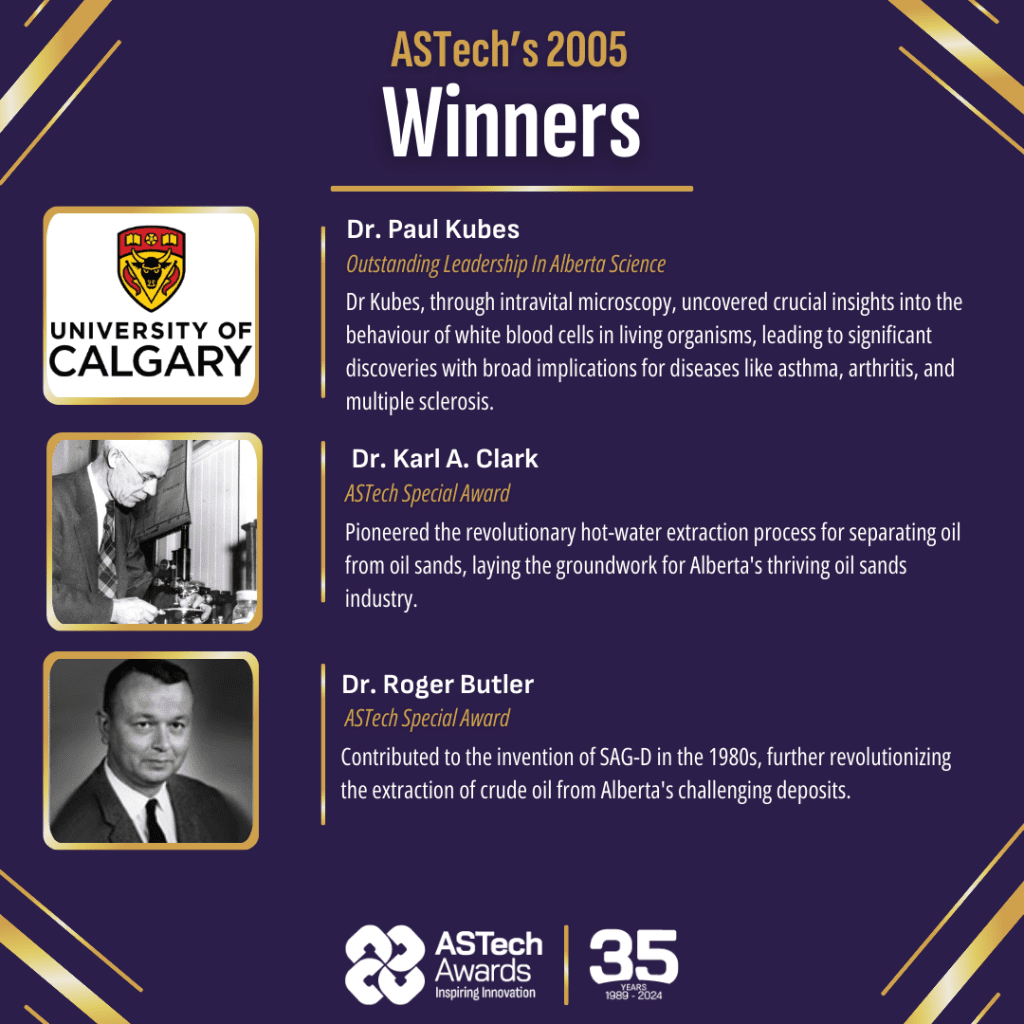
|
|
|
|
|
|
|
|
|
|
|
|
|
|
|
|
|
|
|
|
|
|
|
|
|
|
|
|
|
|
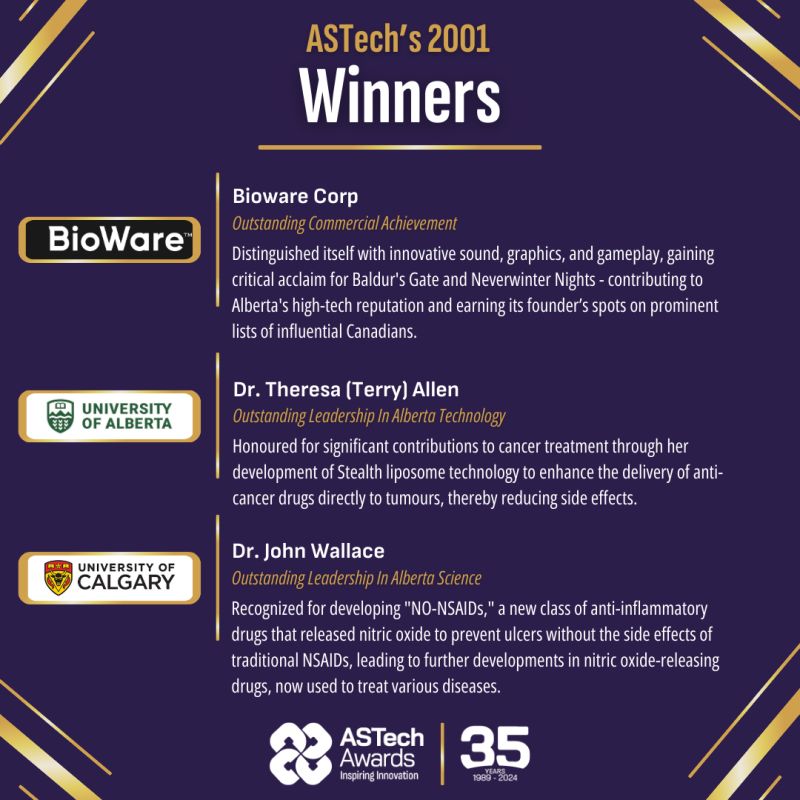
|
|
|
|
|
|
|
|
|
|
|
|
|
|
|
|
|
|
|
|
|
|
|
|
|
|
|
|
|
|
|

|
|
|
|
|
|
|
|
|
|
|
|
|
|
|
|
|
|
|
|
|
|
|
|
|
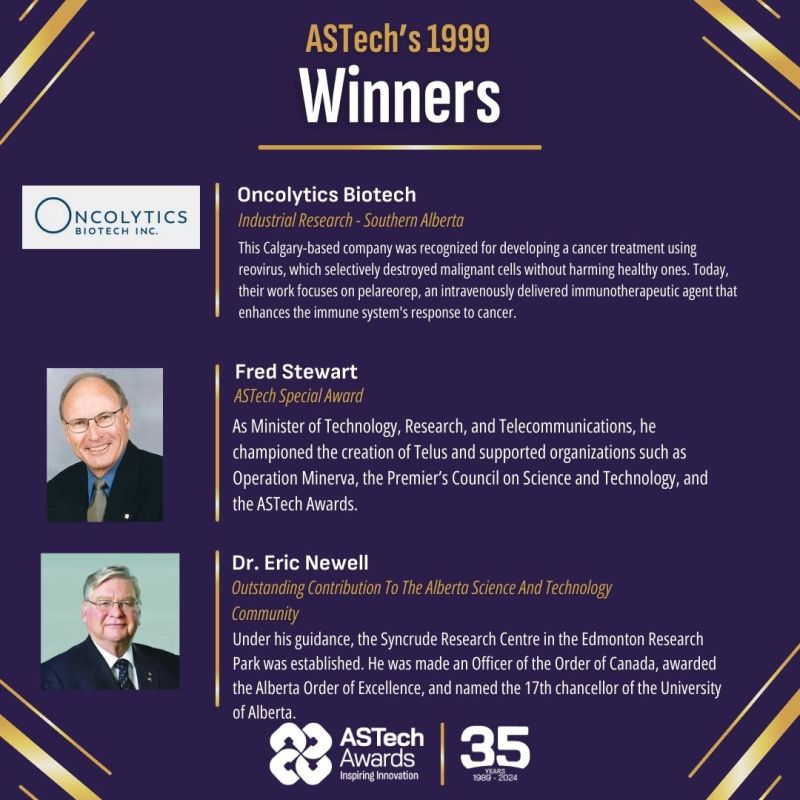
|
|
|
|
|
|
|
|
|
|
|
|
|
|
|
|
|
|
|
|
|
|

|
|
|
|
|
|
|
|
|
|
|
|
|
|
|
|
|
|
|
|
|
|
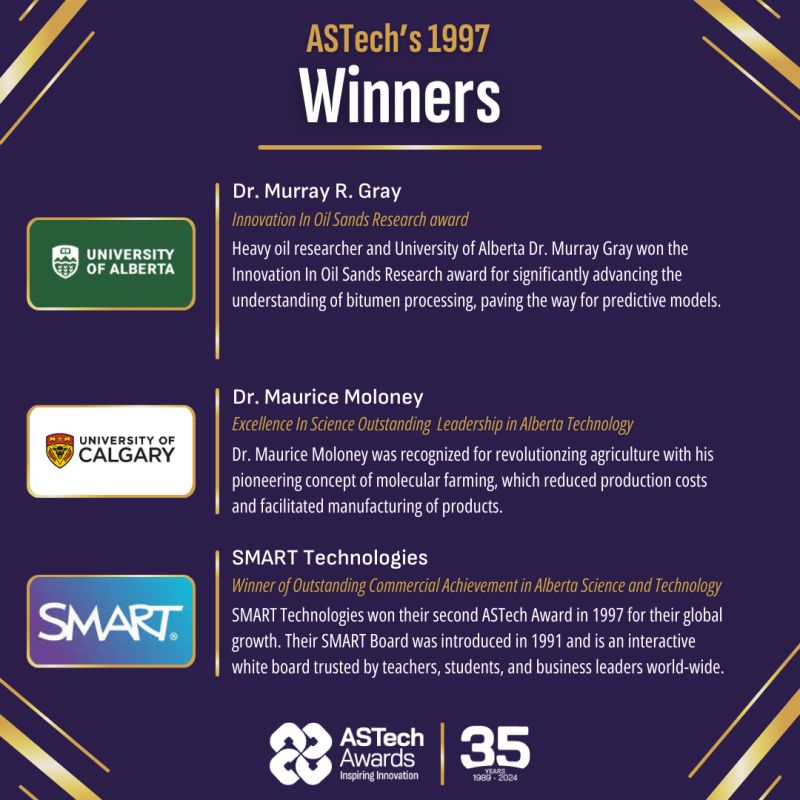
|
|
|
|
|
|
|
|
|
|
|
|
|
|
|
|
|
|
|
|
|
|
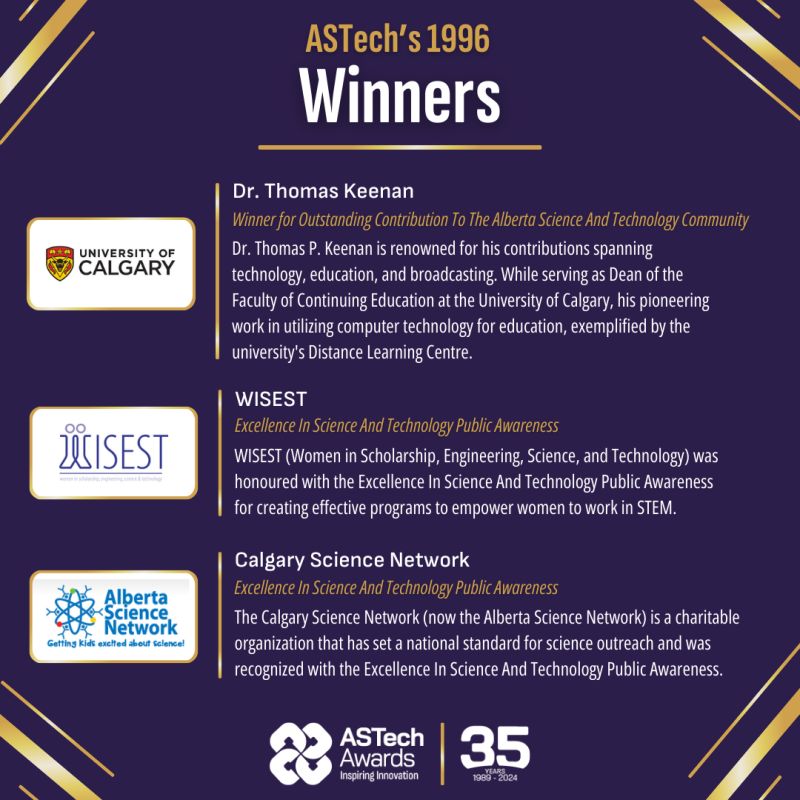
|
|
|
|
|
|
|
|
|
|
|
|
|
|
|
|
|
|
|
|
|
|
|
|
|
|
|
|
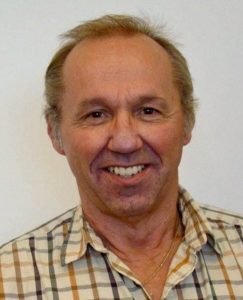
Dr. Robert Hodges was honoured with the Outstanding Leadership In Alberta Science award, a Professor of Biochemistry at the University of Alberta and Director and CEO of the Protein Engineering Centers of Excellence in Canada. Bob was also inducted as a Life Member into the Royal Society of Canada (2016). Dr. Hodges was a world-class speed skater representing Canada in three World Championships and two Olympics. His scientific contributions have included peptide synthesis, pioneering work on the SARS coronavirus Spike protein, muscle regulation and synthetic vaccine development as well as founding multiple companies.

The Praxis Science Outreach Society won the award for Excellence In Science and Technology Public Awareness. As part of the RIN network of Southeastern Alberta(APEX). Praxis works closely with community volunteers, and holds events at Medicine Hat College. Praxis has raised the general level of understanding of science and technology among local youth – and continues to make a difference as a registered charity relying on the support of donors and volunteers.
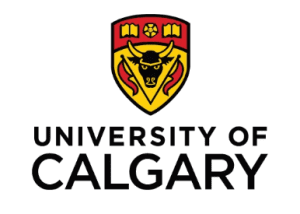
Science and technology journalist Dennis Urquhart was a writer and photographer for the Public Affairs Office at The University of Calgary, winner of the Journalism: Specialized Publications award. His unique ability to clearly communicate complex scientific topics expresses their impact on our daily lives. His writings, published in the Catalyst, explored the importance of research and rural medical consultations via computer, education, geology, and the relationship between biotechnology and reproduction.
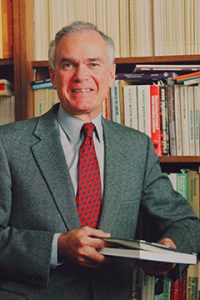
Geotechnical innovator, Dr. Norbert R. Morgenstern, was recognized with the Innovation In Oil Sands Research award. A Professor of Civil Engineering at the University of Alberta, where he helped build the program into an internationally recognized centre of mining excellence. His work, researching the challenges of oil sands development, covers the geotechnical properties of a four-phase system and the treatment of oil sands tailings. Other recognition included: Fellow of the Engineering Institute of Canada and the Canadian Academy of Engineering; the Alberta Order of Excellence; and the Order of Canada.
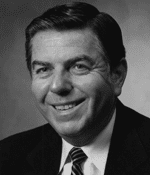
NOWSCO(Nitrogen Oil Well Service Company), a horizontal drilling pioneer and international oil services company, won the Outstanding Leadership In Alberta Science award for developing technologies to enhance well performance and reservoir fluid production. NOWSCO provided practical solutions to challenges that affect the economics of recovering oil in Alberta and around the world. It was founded in 1962 by investors, including Calgary philanthropist and petroleum engineer Pat Shouldice, who served as CEO until NOWSCO was bought by BJ Services (now Baker Hughes) in 1996.

Epsilon Chemicals, located in the Edmonton Research Park, won for Industrial Research for their work on environmentally responsible treatments for handling wastewater contaminants. The Envirofloc(TM) process for food processing plant waste uses natural plant materials to coagulate the contaminants, turning waste products into valuable animal feed. In 1998, Epsilon Chemicals won the Alberta Emerald Foundation for Environmental Excellence. Today, they continue to provide research and development for environmentally responsible products and services, to industrial customers around the world.
Additional 1995 Winners Include:
Merak Projects Ltd winner of Outstanding Commercial Achievement in Alberta Science and Technology for their work on risk assessment software for the petroleum industry, which included reservoir and production engineering applications, field data management software and value and portfolio engineering tools. Profit Magazine recognized ;Calgary’s Merak Products as one of the top ten fastest-growing companies in Canada. Merak was acquired by Schlumberger NV (now SLB) in 1999.
Industrial process innovator Dr. Karl T. Chuang, Professor of Chemical Engineering at the University of Alberta, won the award for Outstanding Leadership In Alberta Technology for his work in catalysis chemistry and chemical engineering that helped solve practical problems for both people and industry. Among his many licensed patents is a process assisting pulp and paper mills in reducing the environmental impact of their effluents. His awards include Atomic Energy of Canada Limited Discovery Awards and the Faculty of Engineering Teaching Award, University of Alberta.
Yellowbird Products Limited, the winner of the Industrial Research Award, was recognized for developing Acoustic Continuous Monitoring (ACM) technology to detect failures of post-tensioning cables in buildings. This Calgary company’s innovation included accelerometers installed in concrete slabs – that constantly monitored electronic activity in the structure while data processing equipment recorded the activity.
ASTech Special Award winner TRLabs (Later TRTech), began as the Alberta Telecommunications Research Centre and expanded from its three founding sponsors: Bell Northern Research, the University of Alberta and the Government of Alberta, to attract 35 major telecommunications players with five laboratories across Western Canada and international recognition for its annual telecommunications technologies conferences. TRLabs produced scores of transferable technologies and supported the professional development and research engagement of hundreds of graduate students.
In 1994, a pivotal year in technological advancement and innovation, the World Wide Web emerged, reshaping the landscape of technology and business for years to come.
Meanwhile, the ASTech Awards celebrated outstanding achievements across diverse fields, ranging from journalism to biotechnology and industrial research


Medical researcher Dr. Lionel E. McLeod was recognized as an Alberta Pioneer in Science and Technology, for his visionary leadership and dedication to biomedical research and education. Dr. McLeod served as the first President of the Alberta Heritage Foundation for Medical Research (AHFMR) (which later became Alberta Innovates – Health Solutions), and was part of the team enabling the province to become a global leader in this space by facilitating the recruitment of renowned scientists, the training of thousands of investigators, and the establishment of world-class research groups and facilities in Edmonton and Calgary. Born in Wainwright, his career spanned roles such as Dean of Medicine at The University of Calgary and President of prestigious medical associations.

Winner for Outstanding Contribution To The Alberta Science And Technology Community, Dr. D. Robert Weir, Senior Vice- President of Sherritt made significant strides in advancing extractive metallurgy, and brought industry and government together in a research and development consortium known as Westaim Technologies Inc. On August 4, 1989 the Government of Canada, the Province of Alberta, and Sherritt Inc. announced the major collaboration that would take place over a five year period for research, development and commercialization of advanced industrial materials – which would include new state-of-the-art facilities and make it possible to recruit more than 100 new scientists, engineers and support personnel from 9 different countries. Dr Weir developed strong ties with the University of Alberta, and the University of Calgary, and in 1989, became a director of the Alberta Research Council (now Alberta Innovates).

Biomedical researcher Dr. Jerry H. Wang, winner for Outstanding Leadership In Alberta Science, became renowned for his groundbreaking research in enzymology, particularly in signal transduction mechanisms. At The University of Calgary since 1982, his work on calmodulin’s calcium-binding activity significantly advanced our understanding of intracellular processes. He held pivotal roles establishing the Cell Regulation Research Group and coordinating a Signal Transduction research group.

Award winner for Journalism: Specialized Publications medical journalist Lois M. Hammond played a pivotal role in educating Albertans on the significance of medical research through her work as Communications Director of the Alberta Heritage Foundation for Medical Research (AHFMR) – (AHFMR later became Alberta Innovates – Health Solutions). Lois was instrumental in writing “The Power and The Promise” a publication that highlighted human biology, Alberta’s pioneering role in medical research, and its impact on health and the economy. It was distributed widely – including every junior and senior high school in the Province. Reaction was “phenomenal” – winning awards from professional public relations organizations, both nationally and internationally.

Dr. Clifton Shook, Winner of the Innovation In Oil Sands Research award and Professor of Chemical Engineering at the University of Saskatchewan, was recognized for his groundbreaking research in producing high-quality data describing pipeline operations that are fundamental to the field. His research led to big construction cost savings for Syncrude and Suncor by optimizing pipeline designs. The Canadian Society of Chemical Engineers also gave him the prestigious Century of Achievement Award.

The Science Alberta Foundation (now known as MindFuel) won the award for Excellence In Science And Technology Public Awareness. Mindfuel promotes science education, encouraging Albertans to pursue careers in science and technology. Champions of ‘hands-on, minds-on’ learning, the organization has enhanced science education through innovative and accessible means since being founded in Calgary in 1990. Presently, MindFuel is a leader in developing youth innovation talent through STEM programs for K-12 and collegiate youth populations. MindFuel has also won the ASTech 2014 Award for Excellence In Science And Technology Public Awareness.

Harding Instrument Company Ltd. award winner for Industrial Research (Northern Alberta Region), for their work designing an electrostatic imaging sensor for gas transmission. Founded by Professor Patrick Harding, as a University of Alberta spin-off, the company gained global recognition, with its products being marketed worldwide. Harding’s headquarters are in Edmonton and have now been in operations for over 55 years.

Bovine genetics innovator Alta Genetics Inc. was recognized for Outstanding Commercial Achievement in Alberta Science and Technology for enhancing the efficiency of milk and meat production. Based in Rocky View County, Alta Genetics started in the town of Balzac, and continues to serve an international market – solidifying its status as a world leader in genetic and reproductive programs to optimize herd performance. Alta Genetics Founder Doug Blair is a recipient of the Order of Canada and the Canadian Commemorative Medal for Outstanding Contribution to Canada. The company is now part of URUS, a global agriculture company.

Dr. Donald B. Robinson was recognized with the Outstanding Leadership In Alberta Technology for groundbreaking contributions to the understanding of hydrocarbons. The Peng-Robinson equation became the industry standard, revolutionizing oil and gas reservoir simulations, hydrocarbon processing, and pipeline flow simulations. Dr. Robinson applied his expertise commercially nurturing a team of world-wide experts through DBR Group of Companies, which was acquired by Schlumberger in 2002. Former Chairman of the Department of Chemical Engineering at the University of Alberta, Dr. Robinson won many honours.
1994’s Other Winners Include:
Mr. Arthur Heller, winner Journalism: General Public, developed Science, Technology and Society, a seven-part series of fifteen-minute video programs that provide real-life examples of complex topics. Produced through Access TV’s Edmonton facility, the series is aimed at senior high school students, although the topics covered are also of interest to more general audiences. Among the issues explored are how scientific knowledge develops, and the influence of society on scientific and technology research.
Winner of Outstanding Commercial Achievement in Alberta Science and Technology, Broadband equipment innovator IDACOM Telecom Division, a division of Hewlett-Packard Canada, was recognized for its commercial achievement for its specialized high-performance protocol testing solutions. This homegrown Alberta company grew from technology originally developed by AGT (Alberta Government Telephones) Limited (now Telus) – and in 1993 had revenues exceeding $30 million.
New Era Systems Services Ltd., was recognized for Innovation in Industrial Research(Southern Region). This Calgary company’s flagship product HARBOR, allowed automatic backup without the need for a mainframe – advancing the management of data and security solutions. New Era Systems Services Ltd. was later acquired by Interlink Computer Sciences in 1997.
In 1993, Alberta’s research and technology arms were keeping pace with the world, with breakthroughs in infectious disease research, parallel computation, and remote field technology where recognized by the ASTech Awards.


Dr. D. Lorne Tyrrell was recognized for Outstanding Leadership in Alberta Science in 1993 for his work in Infectious Disease Research. Dr. Tyrrell found clues while teaching a graduate course at the University of Alberta that lead to the discovery of an antiviral therapy for chronic hepatitis B, a virus that affects over 300 million people world wide. Dr. Tyrrell has since been inducted in the Canadian Medical Hall of Fame.

Joining the University of Calgary in 1981, Dr. Nigg built a premier biomechanics research center, leveraging his expertise across Medicine, Engineering, and Physical Education. His pioneering work spans the design of sports shoes, optimization of floor surfaces, enhancement of amputee children’s gait, and analysis of biomechanical stress on the human body. Dr. Nigg is the founder and chief science officer of Biomechanigg – a multidisciplinary group of specialists who concentrate on research related to movement, exercise and sport. Dr Nigg was awarded the Outstanding Leadership In Alberta Science.

The Time Warp or Optimistic Synchronization technology was a major breakthrough in parallel computation and the impetus for Jade, a computer simulation company launched by Dr. Brian Unger, for which he won the Outstanding Leadership in Alberta Technology award. Dr. Unger, a Professor Emeritus for the University of Calgary, continued to play an important role in Alberta’s research community, and founding president of the Netera Alliance, now called Cybera Inc, a consortium that builds cyberinfrastructure to support research and organizations in Alberta.

Dr. Harry Emmet Gunning received an award for Outstanding Contribution To The Alberta Science And Technology Community. A pillar in education and research and a distinguished career spanning Harvard University and the National Research Council of Canada. He played a pivotal role in advancing the University of Alberta’s Department of Chemistry, and in 1974 became the President of the university. He spearheaded the Edmonton Research Development Park Authority and has received honours such as the Order of Canada and Province of Alberta Achievement Awards.
Today the Edmonton Research Park continues to support innovation through the presence and collaboration of community builders and entrepreneurs such as Innotech Alberta (formerly Alberta Research Council), C-FER, Syncrude Research, ERPBC, Intellimedia, Clinisys, Frontech, Biostream, Quantiam Technologies, ATC, and more. ASTech Award winning companies from the research park have included: API, Nanoprecise, NTwist, Nanospeed Diagnostics, Microlyne, and Zedi.

Russell Technologies Inc won the Achievement in Alberta Science and Technology award for their Industrial Research, specifically for Filling the Market Void for Pipeline Inspection Tools. The Russell team specialize in Remote Field Technology, for assessing tubes, pipelines and plate. Since 1993, this Edmonton based company has continued to expand and develop, and now offer inspections for pipes, tanks, pressure vessels and towers, and own more than 8 patents for technology that it has developed. Now known as Russell NDE Systems Inc, they work with global partners – and have been recognized by the ASTech awards again in 2001 and beyond.

Dr. Raymond Lemieux, a native of Lac la Biche, and a researcher at the University of Alberta was the 1993 Winner: Alberta Pioneer in Science and Technology, celebrated for synthesizing sucrose and pioneering scientific research in Alberta, earned 14 honorary degrees and numerous awards, including the inaugural NSERC Gold Medal. He founded three companies –R&L Molecular Research in 1963, Raylo Chemical in 1966 and Chembiomed Ltd. in 1977 – and significantly contributed to Alberta’s research-intensive industry, with over 200 publications and 28 patents. Lemieux’s extensive achievements are commemorated by awards including the Order of Canada, a biography, and his active engagement in academia and industry beyond retirement.

Dr. Jacob Masliyah, winner of Innovation In Oil Sands Research, was pivotal to the oil sands industry through his research in fluid-particle mechanics. His Extraction Simulation Model was crucial for the Syncrude Expansion Project and informed the design of other facilities. Beyond his technical contributions, Dr. Masliyah has enriched the scientific community with over 150 publications, participated in numerous committees, and received multiple awards for his excellence in teaching and service. Jacob’s work has greatly contributed to the University of Alberta, which awarded him its highest award: the J. Gordin Kaplan Award.
1993’s Other Winners Include:
CS Resources Limited was awarded the Outstanding Commercial Achievement in Alberta Science and Technology (>25M). CS Resources Limited emerged as a leading player in resource exploration, leveraging horizontal production techniques and innovative technologies, the company achieved impressive oil production rates surpassing 8,000 barrels per day, a feat unattainable through conventional methods at that time. CS Resources was acquired Pan Canadian Petroleum (now Cenovus) in 1997.
As a communications officer at Mount Royal College (now Mount Royal University), Rae Haaland, the 1993 Award for Journalism: Specialized Publications, highlighted science illiteracy in Canada through her piece “Another Science Story” in the bi-monthly magazine Imprint. Her work, aiming to shed light on efforts by Alberta’s educational and scientific institutions to address this issue, garnered positive feedback from both individuals and organizations within the scientific community.
As a CFRN Eye Witness News reporter in Edmonton, Michelle Renne Jones was the 1993 ASTech Award Winner for Journalism: General Public for her work preparing a series of in-depth medical features. The specific objective was to explain the relevance of medical breakthroughs to the general public. Her interviews – all conducted with Albertans and all discussing Alberta research projects – were aired to an enthusiastic response from viewers.
Malibu Engineering Ltd earned an ASTech Award in 1993 for Innovation in Industrial Research. Honoured for developing a tool known as Tally-Ho. This bright idea enabled on-site crews to measure racks of drilling pipe or casing by means of frequency modulation, using laser technology.
Valmet Automation, winner of Outstanding Commercial Achievement in Alberta Science and Technology, specialized in turnkey open architecture control and information systems to monitor and control pipeline operations. Built its reputation on supervisory control and data acquisition systems – SCADA, and OASyS® at the time a new operating system, designed and developed in Calgary. (Now under the name AVEVA Enterprise SCADA a leading Pipeline Management System).
1993 Winner for Industrial Research, Z.I. Probes for products that electronically measured temperature and pressure in oil and gas wells. The Edmonton company’s highly sophisticated probe incorporates advanced software and electronics, resulting in superior levels of accuracy, resolution and reliability. In developing the instrument, Z.I. Probes Inc. has performed advanced research in power consumption, sensor technology and associated analog instrumentation.

|
|
|
|
|
|
|
|
|
|
|
|
|
|
|
|
|
|
|
|
|
|
|
|
|
|
|
|
In 1990, innovation included the expansion of landline telephone networks, improvements in infrastructure for mobile telecommunications, and the early stages of transitioning towards digital communication technologies, setting the stage for future years. Notably, the world standard for broadband wireless was set, which would be key in future developments.

ASTech Awards – 1990 Winners: Then and Now

Mr. Eric A. Geddes the 1990 Winner for Outstanding Contribution To The Alberta Science And Technology Community. Mr. Geddes a distinguished alumni of the University of Alberta was a key figure in Alberta’s economic development, and significantly contributed to various community roles. As Chairman of the Alberta Heritage Foundation for Medical Research (1980-1990), he oversaw a substantial increase in funding, elevating Alberta’s status in medical research. As well, under his leadership, the Edmonton Research Park flourished into a thriving technology community. Mr Geddes was awarded the Order of Canada.
Today the Edmonton Research Park continues to support innovation through the presence and collaboration of community builders and entrepreneurs such as Innotech Alberta(formerly Alberta Research Council) , C-FER, Syncrude Research,ERPBC, Intellimedia, Clinisys, Frontech, Biostream, Quantiam Technologies, ATC, and more. ASTech Award winning companies from the research park have included: API,Nanoprecise, NTwist, Nanospeed Diagnostics, Microlyne, and Zedi.
Established in 1986, B & W Technologies (founded by Cody Slater) pioneered gas monitoring devices for the oil industry, revolutionizing safety standards. In 1990, B & W Technologies, won the award for Commercial Achievement in reaching a Global Market.
Acquired by Honeywell in 2006, now known as BW Technologies, they lead the global market in gas detection technology, ensuring safety across industries worldwide. Their innovative range of products remains compact, user-friendly, and cost-effective, setting the standard for hazardous environment safety.
Today Mr. Slater is CEO of Calgary’s Blackline Safety.
Dr. Ronald G. Micetich, recipient of the 1990 Award for Alberta Science and Technology, spearheaded groundbreaking International Pharmaceutical Collaboration. With a PhD in Chemistry from the University of Saskatchewan, Micetich initiated a career in Pharmaceutical Research, cultivating partnerships with industry leaders like Taiho Pharmaceutical Company in Japan. This collaboration led to the establishment of Taiho Pharmaceuticals and Synphar Laboratories in Alberta.
In 1999, Micetich founded NAEJA Pharmaceutical, Edmonton, focused on combating drug-resistant bacteria. Alongside his innovative research, Dr. Micetich served as an adjunct professor at the University of Alberta, sharing his expertise with aspiring scientists.
 ASTech Award nominations now open
ASTech Award nominations now open  As we emerge from the darkness of 2020, the innovation ecosystem in Alberta craves INSPIRATION!
As we emerge from the darkness of 2020, the innovation ecosystem in Alberta craves INSPIRATION!
We’re all looking for the encouragement to persevere. A reason to invest, And motivation to succeed.
 That’s why celebrating stories of success is so important! it proves that turning a brilliant idea into worldwide success is absolutely possible in Alberta. But seeing others succeed, learning from their experiences and capitalizing on their contacts elevates the innovation ecosystem in Alberta. Whether you are an entrepreneur, a woman, a researcher or an innovator, we celebrate your success.
That’s why celebrating stories of success is so important! it proves that turning a brilliant idea into worldwide success is absolutely possible in Alberta. But seeing others succeed, learning from their experiences and capitalizing on their contacts elevates the innovation ecosystem in Alberta. Whether you are an entrepreneur, a woman, a researcher or an innovator, we celebrate your success.
 Nominations open March 1 through May 31, 2021. Finalists are announced in June and awards presented in October.
Nominations open March 1 through May 31, 2021. Finalists are announced in June and awards presented in October.
 If you or someone you know had a banner year in 2020, then get ready to submit your ASTech Award nomination. Deadline is May 31, 2021.
If you or someone you know had a banner year in 2020, then get ready to submit your ASTech Award nomination. Deadline is May 31, 2021.
 11 Months of Inspired Thinking 2020/21
11 Months of Inspired Thinking 2020/21As the world faces down the COVID-19 pandemic, innovation in Alberta has never been more powerful.
Researchers and entrepreneurs are answering the call and finding ways to adapt, overcome, support and develop important solutions.
The ASTech Foundation has compiled an e-book of more than 90 of these stories, including 12 new stories, covering March 2020 through January 2021. Get inspired by our homegrown innovation in the lab and on the street in Coronavirus-Inspired Alberta Innovation.
Download the free 2nd Edition e-book.
Do you have a story that should be added to the next edition? Send us a note to info@astech.ca

“I have a clear vision for the important role ASTech should play to inspire innovators in Alberta,” said Dr. Thompson. “In addition to our annual Awards program, which recognizes outstanding achievement, ASTech promotes those success stories at home and abroad to inspire Albertans to transform their futures and attract outside investors to explore important opportunities in Alberta.”
Dr. Thompson joined the Board in 2018. He views 2021 as a “bridging year” for ASTech, to move toward more robust promotion and communication of ASTech Awards alumni and their success by 2022. ASTech has honoured more than 600 laureates since 1989.
Recent ASTech Award winners include:
The ASTech Foundation recognizes, celebrates and grows the culture of innovation in Alberta by highlighting the work of ASTech Awards alumni. The ASTech Awards honour Alberta’s brightest minds and their greatest achievements in the innovation ecosystem. Winners of the 2021 ASTech Awards will be announced in October 2021.
Interested in how Artificial Intelligence might impact your business? Join us March 27th for a morning workshop to hear made-in-Alberta success stories and learn about what’s next in AI.
Seating is limited; attend in person at SAIT or via webcast.

Three 2017 ASTech Award Winners and Humans of Alberta Innovation were celebrated on the final day of the INVENTURE$ conference, June 8, 2018. The INVENTURE$ Conference brought venture capitalists, angel investors, startups, entrepreneurs, service providers and thought leaders together in Calgary to discover and share the latest in innovation, research, capital access and deal-making. At the Pitch Awards, the Humans of Alberta Innovation series captured the passion behind the achievements honoured at the ASTech Awards. Check out their stories:



Take a look at the people behind the research, product, company or groundbreaking discovery. The ASTech Foundation’s Humans of Alberta Innovation campaign shows a new side to Alberta’s fascinating innovation community — the human one.
Dr. Ryan Tucker is the 2015 Leaders of Tomorrow Winner for leading an applied research team that helps create and take new products to market for environmental protection, water treatment, and sustainable construction.
 Growing up I was much like many kids where I wanted to be a fireman, or an architect. Understanding what a career is when you’re young, it’s a wacky thing, especially for those still in school. I’ve always enjoyed science and technology. I was interested in how things work and what goes into making things operate. Even as a kid I would always take things apart around the house and I was really fascinated with the concept of inventing something.
Growing up I was much like many kids where I wanted to be a fireman, or an architect. Understanding what a career is when you’re young, it’s a wacky thing, especially for those still in school. I’ve always enjoyed science and technology. I was interested in how things work and what goes into making things operate. Even as a kid I would always take things apart around the house and I was really fascinated with the concept of inventing something.
My fascination with how things work got me interested in science and technology. The next part was opportunity. It’s all about finding out what opportunities exist and working towards them. Once I got to university, I realized I actually had some skill at this and there were some things I could do to have a career in science and technology. Innovation is happening globally and I’ll always try to find a spot to become a part of it. It’s everywhere; it’s the only thing that’s going to make my children’s lives different than my own. My new gauge of success is how can my work have a positive impact on a larger number of people?
I had the opportunity to live in the Netherlands to work in science, which was really cool. On the weekends, I had a motorcycle so having the freedom to roam around and time do to it was the greatest blessing. I really valued that. When I travel, whether it be for work or pleasure, anywhere I can find a science centre or technology museum, you’ll find me there.
In terms of experimental infrastructure and research infrastructure, we have a lot of great facilities in Alberta. On the education front, we train good scientists, engineers and technologists. There are some companies that are truly innovating on a global scale, but we need more. Being ready to try to move towards a global level of innovation is something they should be ready to do. The first job you get may not be working for NASA, or actually working at the forefront of science and technology, but there’s an opportunity over your career to bring what you’re working on closer to true innovation.
I had job offers that I chose not to take because I wanted to stay in Alberta. There’s a big opportunity here to take the time to progress our industry and broaden the spectrum. Our universities are great and I think it’s worthwhile to stay and try to push the envelope. Any young innovator who’s starting their career in Alberta should seek out those who also find value in staying and building something here. It’s not going to happen in one company or with one person; it’s a group of people within a vast industry that strive for success.
It’s all about trying to make an opportunity for yourself in whatever situation you’re in. I’ve always been interested in working in the energy and water sectors; they’re becoming the biggest technological issues in this generation. I’m in the early stages of a project right now working with another company and the University of Alberta. We’re using world-class technology from the industrial side and academic side for water treatment. It will be really exciting to see how far we can advance the technology in the next few years. Going from how technology works in a lab to implementing it in real life situations is the most interesting part of innovation for me.
Take a look at the people behind the research, product, company or groundbreaking discovery. The ASTech Foundation’s Humans of Alberta Innovation campaign shows a new side to Alberta’s fascinating innovation community — the human one.
Allan Chegus is the president and CEO of 2015 Stream Systems Ltd., which won the 2016 Outstanding Science and Technology Start-up Award. Stream Systems’ technology identifies and solves optimization issues by replacing expensive custom models with a business solution that can be created five to ten times faster than the models.
 Back in the ‘80s when I started working in oil and gas, it was very rudimentary. PCs were just coming in, it was simple stuff. Data was scattered and incomplete. I did a lot of operational engineering work, and I got into controls engineering and control systems. We started looking at the logic behind how the systems worked. And I got really interested; this is very cool stuff!
Back in the ‘80s when I started working in oil and gas, it was very rudimentary. PCs were just coming in, it was simple stuff. Data was scattered and incomplete. I did a lot of operational engineering work, and I got into controls engineering and control systems. We started looking at the logic behind how the systems worked. And I got really interested; this is very cool stuff!
I became a consultant later in my career and soon realized that organizations weren’t thinking about or solving problems in a holistic way. Decisions were siloed within groups or departments, rather than with the understanding of how it would impact the organization as a whole. I realized that what was needed was the application of systems thinking to understand operational networks differently. And, this needed to be done in a way that facilitated experimentation to arrive at the best outcome.
What I imagined was a creative tool that enabled the user to see how operational decisions impacted networks as a system, but that also allowed them to experiment with new ways of operating. The technology couldn’t support the ideas yet, but we could conceive it, understand it and think about how it might work.
Today, the tool and technology have reached convergence with the need because we have so much capacity and speed. So now it’s limited by our creativity. How do we put the algorithms and the software together to replicate the real world?
This is why modelling is so important. The technology at Stream Systems takes our collective experiences and puts it together with algorithms and systems that make sense. It’s a single model for finance, operational, environmental, human behaviour, business rules and quality information. Then you throw scenarios at it to understand if we run this scenario, how does it impact the entire organization?
It takes away from individual understanding and creates a cohesive, collective understanding. Getting access to information is important; getting access to information in real time is crucial. The human will always make the final call, but the machine is great at crunching a lot of information to identify all the alternatives.
As the world gets more connected and more complex, we need tools to help us understand what is even possible. As humans, we need to understand how to deal with that complexity. Our brains are wired for pattern recognition, not data crunching.
Our world is a series of systems. Systems thinking is becoming more prevalent, and it’s driven through our education system. At engineering school, I learned to decompose the problem, get it down to its elements, and solve those problems. The assumption was when you add it all up again, it solves all the problems, but I realized it didn’t. I know if we shift technology to a systems-based approach, then each system is impacting part of the bigger picture.
Since we started Stream Systems, my world has completely changed. As an entrepreneur, I am consumed by my work; it becomes everything you are and everything you do. It’s also opened my eyes to what’s really possible. I look back on the concept now and it was so limited. Now I see it’s only limited by imagination. We are now solving problems with Stream that industries have grappled with for decades, and we are solving them on almost a weekly basis. That’s how revolutionary this is.
I’m trying to get people to understand anything is possible, but the biggest challenge is disbelief. Change is difficult.
When we started Stream, it was about changing oil and gas, and then we realized it was about transforming human thinking. Very philosophical, but not very practical. So, we said let’s create software to show people how this can be applied. That lead us into mining, mass transit, the power grid and hard-to-decipher government policies. These are all examples of systems thinking.
So here we are in Calgary, with our little company, 18-20 people. We do expect to scale up quite quickly, and we expect to go far beyond Calgary. It’s all based on ‘Let’s take this philosophy to the world, and help the world be a better place.’ Sometimes it doesn’t go as fast as you’d like. The real world meets your desire with limited resources.
If you think you’ve got a better idea, pursue it. As Canadians, we don’t have enough entrepreneurs. We have smart people and the physical resources, so what is holding us back? It’s our willingness to take risks, to be the first. That’s what we should believe as a Canadian culture. Take a leap of faith.